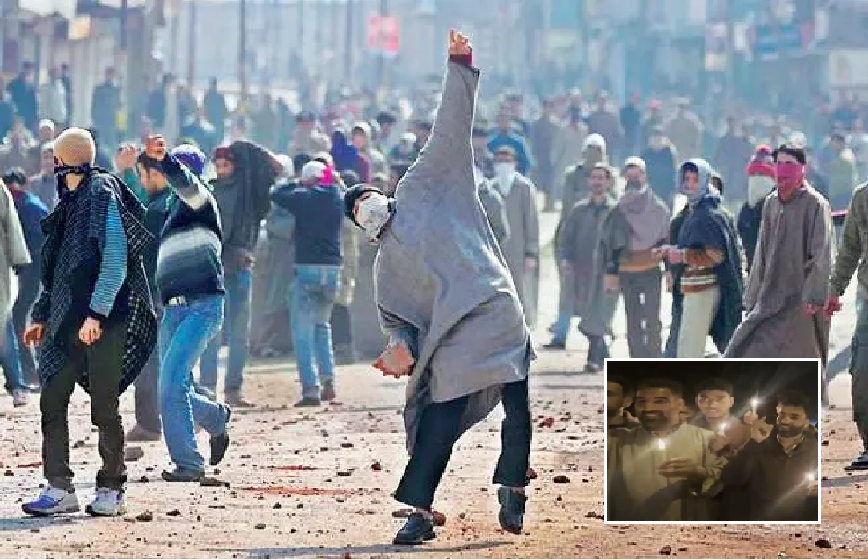
- Without the support of Over Ground Workers (OGWs), who provide shelter, safe houses, documentation, weapons, and state-of-the-art communication gear, terrorists can’t survive the Indian Army and police and carry out such operations.
- It is now clear that there was proper planning and the terrorists were given precise intel for them to ingress, carry out the attack, and egress with ease, which was made possible with the help of OGWs.
- The time has come for our government to start treating OGWs as armed hostiles and a dangerous threat to security in Kashmir, and charge them under stringent laws like the UAPA, PSA, or the NSA.
The dastardly terror attack carried out by Pakistan-aided terrorists in Pahalgam in the Indian Union Territory of Jammu & Kashmir has again taken India to the precipice of war. What will transpire in the coming day and weeks is anybody’s guess, but one thing is certain: the terrorists who carried out this attack that killed 26 civilians after ascertaining their religion, could not have executed it without the support of the Over Ground Workers (OGWs) in the valley.
Napoleon Bonaparte famously said that an “Army marches in its stomach” and without logistics, this attack would simply be impossible. To put in perspective the purpose of logistics is about managing the flow of resources between point A and point B. In this case the transport of four highly trained zealots to carry out this attack and in that process, provide the said jihadists with a place to stay, access to weapons and communications.
It has now been confirmed that the planning of this attack to create multiple implications for India to act was designed by the 26/11 mastermind and Lashkar chief Hafiz Saeed. As per news reports, the terrorists have been active in the Kashmir Valley for a long time and have been behind several high-profile attacks across the region, including in Sonamarg, Boota Pathri, and Ganderbal.
It is quite possible that these terrorists from Pakistan, who had previously served in the army, must have extensive experience in field craft and carried out the October 2024 attack that led to the death of two civilians and two Indian Army personnel at Boota Pathri. In the same month in Sonamarg, six labourers and a doctor who were working on tunnel construction were gunned down. It is now believed that Hashim Musa, one of the main accused in the Pahalgam massacre, is a person of interest in the Sonamarg attack too.
But the question remains, how can these men survive and carry out multiple terror attacks inside Kashmir and escape in thin air? The answer is that without the support of Over Ground Workers (OGWs), who provide shelter, safe houses, documentation, weapons, and state-of-the-art communication gear, terrorists can’t survive the Indian Army and police and carry out such operations.
Who is an Over Ground Worker in Kashmir Specific Context?
An Over Ground Worker (OGW) is a person who supports militants, or in the case of Kashmir, Islamic terrorists. They usually have a good standing in the community and a clean record so as not to attract any attention. Also, they are not armed member of any terror group but play a very important role by assisting terror operations in various ways, such as:
- Providing logistical support (e.g., shelter, transport, food)
- Acting as informants (spying on security forces, relaying movements)
- Spreading propaganda (online or offline)
- Provide official government identity documentation
- Recruiting new members for militant groups
- Storing or transporting arms and explosives
After the abrogation of Article 370 and post-Covid, the Kashmir valley saw a resurgence in tourism, leading to economic opportunities for the local communities. But more importantly, the money that was once given to stone pelters was cut off, and most of them joined the mainstream economic system. But what affected the terrorists the most was the dwindling OGWs that were crucial for sustaining insurgency movements.
But there is still a very strong network of OGW that is operating within the periphery of civilian populations, blending in and making it difficult for security agencies to track them, making them the backbone of the insurgency ecosystem that allowed the Pahalgam terror attack.
It has now come to light that the Baisaran meadow in Pahalgam was out of bounds for tourists which only indicates that there was a security failure. However, it is also clear that there was proper planning and the terrorists were given precise intel for them to ingress, carry out the attack, and egress with ease. This can only be made possible with the help of OGWs.
Conclusion
The time has come for our government to start treating OGWs as armed hostiles and a dangerous threat to security in Kashmir. They have to be charged under stringent laws like the Unlawful Activities (Prevention) Act (UAPA) or the Public Safety Act (PSA), or the National Security Act (NSA). Even though they may not be directly involved in committing acts of terror, their role is the most critical in enabling terrorists to carry out such attacks.
Everyone in India knows about Urban Naxals, who for decades have given intellectual covering fire for Maoist terrorists who have been responsible for killing thousands of civilians and security personnel for decades. They were the best OGWs for this violent movement, hell-bent on overthrowing the government.
However, as the violent Maoist/Naxal movement is taking its last breath, it has been made possible because they lost the OGW support. The current Indian government has stated that it will end the Maoist/Naxals by 2026, and it has been possible because the government, with the help of various security agencies relentlessly pursued to render OGWs impotent, and we need to do the same in Kashmir.
Balaji is a freelance writer with an MA in History and Political science and has published articles on defence and strategic affairs and book reviews. He tweets @LaxmanShriram78. Views expressed are the author’s own.
